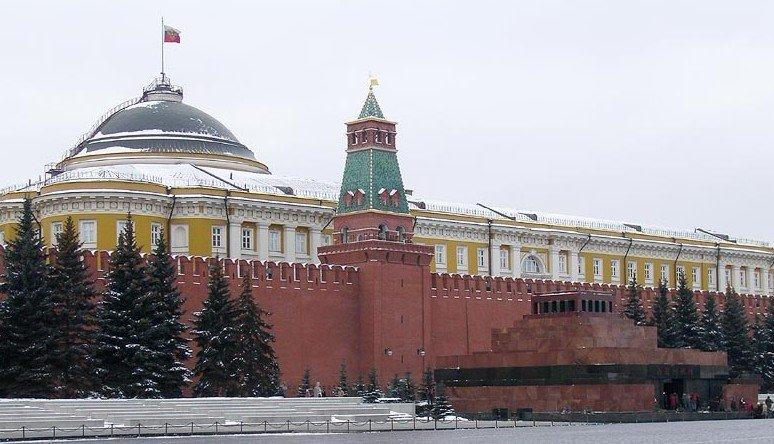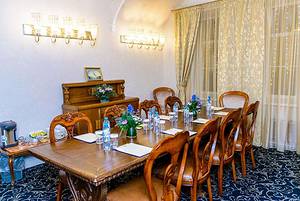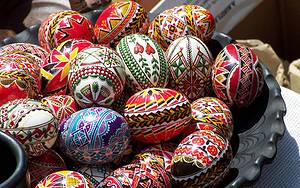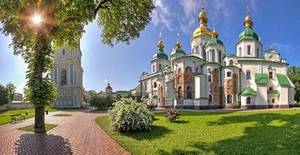Moscow 3-day Classic Tour
2 cities |
10 attraction(s) |
total distance 1500
km
 TIPS
TIPS
Day1
Day2
Day3
Day1: Moscow
3 attraction(s) ·
4 km
1
Lenin's Mausoleum is located in the center of Red Square, opposite the Gum department store. It is a symbol of Moscow, built with red granite and black limestone. The mausoleum has an upper level with a reviewing platform, witnessing the famous 1941 Red Square Parade. In 1994, Lenin's Mausoleum was recognized as a "World Heritage Site" by UNESCO.
Lenin's Mausoleum was designed and built according to the design of Academician Shchusev, and A. Shchusev (1873-1949) was awarded the title of "Honored Architect of the Soviet Union" for this.
On January 21, 1924, at 6:50 am, Lenin passed away in the village of Gorki near Moscow. On the 25th, A. Shchusev made a sketch for the tomb design, and on January 27, 1924, a temporary wooden mausoleum was hurriedly built with Lenin's crystal casket inside.
In 1925, Lenin's Mausoleum was rebuilt to be more majestic, but still made of wood; from 1929 to 1930, it was reconstructed with polished red granite and black marble; after the Great Patriotic War, the crystal casket was replaced, and the interior of the mausoleum was repaired; in 1974, when Red Square was renovated, the mausoleum was also renovated; in 1976, preventive maintenance was performed.
Lenin's body is placed inside the mausoleum in a crystal casket, covered with the Soviet flag. His face and hands are illuminated by special lights, clear and serene. He is wearing a yellow jacket and a Red Banner Order is worn on his chest. Lenin was only 1.62 meters tall, but he doesn't appear short lying there.
Lenin's body has been preserved for 93 years. The secret formula for preserving the body is classified as cutting-edge technology and a national top secret. Currently, the temperature inside the crystal casket where the body is kept is maintained at a constant 16°C. Every Monday and Friday, an expert group checks the lighting conditions in the mausoleum and applies a special preservative to Lenin's face.
The clothes worn by Lenin's body are made of a shiny exquisite fabric specially ordered from Switzerland, which Lenin liked during his lifetime. Generally, technicians change his clothes every three years, but due to the lack of funds from the "Lenin Mausoleum Charity Foundation," necessary preservation expenses are tight, not to mention that the price of clothes is quite expensive (up to $30,000). Therefore, Lenin's body has been unable to be timely dressed in new attire for many years, and the staff can only meticulously clean the existing clothes.
During the Soviet era, the maintenance of Lenin's Mausoleum was funded by the state. After the collapse of the Soviet Union, the Russian government quietly stopped this financial funding. The "Lenin Mausoleum Laboratory" was renamed the "Center for Biostructural Medical Research of the All-Russian Medicinal Plant Science Production Union." Fees are raised through donations from charitable organizations such as the Communist Party of Russia and individual Communist Party members. Due to economic conditions, the funding for the maintenance unit of Lenin's Mausoleum has been insufficient, and currently there is only enough funds for routine maintenance work.
Opening hours: Free admission, Wednesday and Thursday 10:00-11:00, Saturday 13:00-14:00.
Visiting regulations: People must enter from the west side of Red Square. Security checks are required at the entrance, and no backpacks, handbags, cameras, or video cameras are allowed inside. The purpose is to prevent visitors from having any tourist sightseeing intentions and to only experience spiritual worship and reverence. After entering, walk more than one hundred meters to reach Lenin's Mausoleum.
According to the regulations, after leaving the mausoleum, one cannot directly leave Red Square, but must go west, bypass the reviewing platform, and go behind Lenin's Mausoleum to visit the "Mausoleum of Famous Persons." There, there are more than 20 tombs lined up neatly against the red wall adjacent to the Kremlin. They are prominent figures of the Soviet era, including Kalinin, Sverdlov, Zhukov, military and political figures, as well as the writer Gorky, the scientific giant Kurchatov, and the first astronaut in human history, Gagarin. These tombs are all completely identical in shape, with a half-body bust of the deceased carved on the top of the square pillar-style tombstone.
A black marble slab is flat on the coffin cover, engraved with their names and dates of birth and death, with two bright red carnations placed diagonally. People must walk past each of these tombs before exiting Red Square from the eastern side. This is probably a rule left over from the Soviet era.
From 1953 to 1961, Stalin's body was also buried in Lenin's Mausoleum. On October 31, 1961, it was removed from Lenin's Mausoleum. Now, his body is buried in the "Mausoleum of Famous Persons." History still gives him a place, because of his immortal merits in World War II, which Russians still remember.
4
km
2
Red Square (Russian: Красная площадь) is a public square in the Tverskoy District. It is known for several famous buildings, including Lenin's Mausoleum, St. Basil's Cathedral, and the Kremlin. To the east of Red Square is the State Department Store, with the State Historical Museum next door. Red Square is 695 meters long and 130 meters wide. The land where Red Square is located used to have buildings, but they were destroyed by the Great Fire of Moscow in 1571. The empty space gradually became the main market in Moscow. Since then, Red Square has been used for various public ceremonies and occasionally as the site of coronations for the Russian Empire. Red Square has gradually been revitalized since then and has been used for official ceremonies by the Russian government since its establishment. Red Square was expanded after the burning of Moscow by Napoleon's army in 1812, when the local people rebuilt their homes and widened the square. In the 1920s, Red Square was merged with the nearby Vasilyevsky Square to form its current size. The name "Red Square" does not derive from the color of the surrounding bricks or its connection to the color red and the Soviet Union (hence the misconception of it being "Red Wall"). The name originated from the Russian word "красная" (krasnaya), which means "red" or "beautiful". It was first applied to the Church of St. Sophia, and then transferred to the adjacent square.
1
km
3
St. Basil's Cathedral, located at the southern end of Red Square near the Kremlin, was designed and built by Russian architects Barma and Postnik under the orders of Ivan the Terrible and Metropolitan Makariy. Construction began in 1555 and was completed in 1560. It is a symbol of Moscow and was originally called the Cathedral of the Protection of Most Holy Theotokos, also known as Pokrovsky Cathedral. The name St. Basil's Cathedral was given in honor of the revered monk Basil whom Ivan the Terrible trusted. The cathedral has nine golden onion-shaped domes, cleverly combined into a single structure with nine interconnected octagonal towers. The central tower measures 47.5 meters in height from the base to the top, while the other eight shorter towers are skillfully arranged around it. The nine domes were not originally part of the cathedral but were added later. St. Basil's Cathedral has a unique design, with a plan shaped like a "+," which matches its octagonal structure and sets it apart from Western church architecture.
Built in 1553-1554 to commemorate Ivan IV's (Ivan the Terrible) victory over the Kazan Khanate, St. Basil's Cathedral originally consisted of seven wooden chapels. It was later reconstructed with nine stone chapels from 1555 to 1561. The cathedral features intricate carvings and a main central tower that stands at 57 meters, making it the tallest building in Moscow at the time.
In the 16th century, the basement of the cathedral was used as a treasury. According to legend, two nobles learned about the treasures and planned to rob the cathedral in 1595. They conspired to set fire to the city to distract the guards. Unfortunately, their plot failed and both were executed.
In 1912, St. Basil's Cathedral was deemed a dilapidated building by the Russian Society for the Preservation of Monuments. After the October Revolution in 1917, the government began restoration work. The main dome and the western gate were restored in 1918, and other parts were renovated in the late 1920s and early 1930s. The original steps in front of the cathedral were reconstructed along with the preserved white stone foundation. The interior was restored in the mid-1930s, and the murals in the central church were recreated in the style of the 16th century from 1956 to 1965.
From 1967 to 2012, the iron plates on the surface of the cathedral's domes were replaced with copper plates at the government's expense. The crosses and ornamental cornices at the top were regilded. This extensive project required approximately 30 tons of copper plates, with a thickness of only one millimeter, to cover several domes. The main entrance and exterior galleries were restored in 1980.
St. Basil's Cathedral, also known as the Cathedral of Vasily the Blessed, has had very limited use throughout its history and now serves as a branch of the Russian State Historical Museum, open for visitors as an architectural monument.
Ivan IV, also known as Ivan the Terrible, was the first tsar in Russian history. He was notorious for his cruelty due to his traumatic childhood experiences. In the mid-16th century, he launched an expedition against the Kazan Khanate and achieved a series of significant victories, eventually annexing the region. To celebrate his victory, he ordered the construction of a cathedral, with each dome representing a great triumph. These domes were named after various saints, with the most famous being St. Basil, who had prophesied Ivan's killing of his own son, Ivan. St. Basil, the monk, lived a life of asceticism and passed away in the cathedral, leading to it being named after him.
According to legend, the Russian army was able to succeed in the war with the assistance of eight saints. To commemorate these saints, the cathedral was built with eight towers and eight domes representing each saint. The central and tallest cathedral's dome symbolizes the highest position of God. When the cathedral was completed, its beauty and grandeur were admired worldwide. Ivan IV did not want similar cathedrals to be built in other countries, so he ordered the eyes of all the architects and craftsmen involved in the construction to be blinded to prevent them from working for other rulers. As a result of his cruelty, Ivan IV earned the title of "Ivan the Terrible" in Chinese.
Russia was a state where politics and religion were closely intertwined before the October Revolution in 1917. The Eastern Orthodox Church actively supported the political ambitions of the tsars. The triumph over neighboring countries such as Lithuania and Poland, as well as Islamic countries like Turkey, Iran, and Mongolia, was done under the banner of Eastern Orthodoxy. The conquest of Kazan was no exception. The establishment of St. Basil's Cathedral marked Moscow as the religious and political center of Russia. It was a milestone in the Russian nation's liberation from foreign rule, the completion of unification, and the gradual path toward becoming a powerful centralized multi-ethnic state.
Day2: Moscow > Kharkiv > Moscow
4 attraction(s) ·
1489 km
1
The estate is located on the right bank of the Moscow River, covering an area of 390 hectares, offering a picturesque view of the Russian river.
In the 14th century, Kolomenskoye estate became a summer retreat for the Russian tsars. In 1532, to celebrate the birth of a prince who could potentially become a future tsar, this church estate was built. The Ascension Church, built in the same year, is the oldest building in the church estate, with a stone tower and cone-shaped roof. The "golden age" of Kolomenskoye estate was in the mid-17th century when the magnificent wooden palace was built. With 270 rooms and 3000 windows, it was the summer residence of the tsars and was considered the "eighth wonder of the world." Although the palace no longer exists, the unique landscape is still cherished by older generations of Russians.
Other main buildings in the estate include the John the Baptist Cathedral built in 1555-1561, the St. George Bell Tower in the 16th century, the Kazan Cathedral built in 1649-1653, the Water Tower built in 1670, the Red Gate built in 1672-1673, and the Wooden Gate Tower built in 1691-1692.
Peter the Great spent his childhood here. He was very fond of shipbuilding and even built a small boat on the nearby Moscow River. You can still see a Russian-style "Peter's House" in the estate.
The park in the estate has stunning scenery. In summer, ancient trees tower above, and the orchards emit a fragrant aroma. Evening open-air concerts are often held, and you can also take a boat trip on the Moscow River. In autumn, when the fruit trees are ripe, people are allowed to freely pick them. Many Russian old ladies pick them and make jam to enjoy. In winter, the snow reflects off the ancient towers and many people come here for skiing and ice skating. Various musicals, folk festivals, and gardening activities are frequently held here. All of this deeply attracts local residents and visitors from all over the world.
15
km
2
The Novodevichy Convent was built by Tsar Vasily III in 1524 to commemorate the liberation of the ancient Russian city of Smolensk from Lithuanian rule. Until the early 18th century, the convent enjoyed royal protection, making it exceptionally grand and elegant, and the most beautiful in all of Moscow. Situated in the southwest of Moscow, the Novodevichy Convent is part of a series of monastic buildings that were integrated into the city's defensive system in the 16th and 17th centuries. It has direct links to Russia's political, cultural, and religious history and is closely connected to the Moscow Kremlin, serving as a place for women of the imperial family and nobility. Members and descendants of the imperial family are also buried in the convent's cemetery. The interior of the convent is lavishly decorated and houses important works of art, representing the pinnacle of Russian architectural achievement. For most travelers, the main attraction is the famous Novodevichy Cemetery, located southwest of the convent with its entrance facing the southeast. The more you know about Russia, the more names of the buried you will recognize, and even diligent explorers may come across the tomb of Maxim Gorky.
739
km
3
Gorky Park has a small railway that carries visitors from May to October (only on weekends in spring and autumn, and from Wednesday to Sunday in summer), as well as motorized amusement facilities. It is connected to the botanical garden by a cable car, which covers a distance of 1387 meters and can carry a load of 180 kilograms, allowing only two people to board. The fare for one trip is 10 rubles, and it takes 18 minutes, during which you can see nothing but tall trees with only the air separating people from them.
736
km
4
Arbat Street
This famous street has a history of over five hundred years. Unfortunately, it has gradually become like Red Square, a exclusive area for foreign travelers. African employees in souvenir shops greet tourists in Chinese; unskilled portrait painters display their cartoon-like designs for world celebrities; musicians with peculiar instruments sit in the same place all year round, playing the same song. Only on weekends with good weather can you see locals on this street.
Arbat Street connects the Garden Ring and the Boulevard Ring. Travelers sweeping the street from east to west can also enjoy the buildings along the street, in addition to the souvenir shops and cafes.
There is also a New Arbat Street (у́лица Но́вый Арба́т) that radiates from the same point as the old one, but unfortunately, it has been voted as the most ugly street in Moscow. Just take a look at the domino-like buildings on the roadside and you will understand why.
Day3: Moscow
3 attraction(s) ·
7 km
1
The Moscow Kremlin
UNESCO World Heritage Site. In Russian, "Kremlin" means castle. In fact, many ancient Russian cities have their own "Kremlin", but none of them can compare to Moscow in terms of status. Ever since the unification of the Moscow Principality and Russia, except for the "St. Petersburg period" that lasted for over two hundred years, this place has always been the heart of the country.
Inside the Kremlin, there are two museums that house rare treasures, namely the Armory Chamber and the Diamond Fund. The most famous items in the Armory Chamber are not weapons, but the Faberge eggs, the Tsar's coronation crown, the Monomakh's cap, and various royal costumes and carriages. On the other hand, the collections in the Diamond Fund are more closely related to its name, including the Tsar's diamond crown, diamond scepter, diamond medals, and the famous Persian Shah Diamond, to name a few. Regardless of what kind of imagination, expectation, or preconception you have about this place, these countless dazzling diamonds will leave you speechless. Both museums require separate tickets and have scheduled entry times. It takes at least a whole day to carefully explore all the facilities and exhibitions open to tourists inside the Kremlin. A quick glimpse of the two squares and three cathedrals would take over two hours.
5
km
2
The Cathedral of Christ the Saviour is the main cathedral of the Russian Orthodox Church. It was built in 1860 by the Tsar as a vow to overcome Napoleon and was destroyed in 1931. It was later rebuilt after the Soviet Union's collapse. The cathedral has a smaller church on the lower level and hosts exhibitions. There is a tourist office at the southwest entrance, providing various services including arranging visits to the observation deck. The Patriarshy Bridge to the southeast of the cathedral is a great location for taking photos, especially during sunset.
3
km
3
The main building of the museum (Гла́вное зда́ние) is the deserved focus of Russian classical art. Most of the collections were acquired by the wealthy merchant Tretyakov himself in the 19th century, and his statue is located at the main entrance of the museum. The museum building itself is an outstanding example of Moscow's new art style. The Tretyakov Gallery has collected almost all the masterpieces of Russian religious art and Russian art after the 18th century. It has become one of the most famous tourist attractions in Moscow, like the Kremlin. Tourists from all over the world come here to appreciate the art treasures. The museum has over 60 exhibition halls, which would take at least 3-4 hours to fully appreciate. The museum also has many branches. The branch that collects 20th-century art (Зда́ние на Кры́мском валу́) is located in the Central House of Artists (ЦДХ) across from Gorky Park, and it can be called a representative of Russian contemporary art. The lineup includes early artists such as Goncharova, Shagal, Kandinsky, and Malevich, as well as socialist realist painters and various installation artists. Special exhibitions, especially those celebrating the milestone birthdays of famous artists, are often held here. Another interesting branch is the Vasnetsov House-Museum located in the northern part of the city. The works of Vasnetsov, a master of the new art movement who loved to depict mythological and legendary themes, can be found in a corner room on the second floor of the main building. Although his residence villa is not large, it is exquisitely designed, especially the interior furnishings, which are outstanding examples of the new art style. The history of Russian art can also be said to be the history of its collections. In the 19th and 20th centuries, several wealthy collectors with aesthetic taste and noble spirit continuously acquired valuable artworks, thus laying the foundation for today's art museums. Among them are the Tretyakov brothers, who founded the Tretyakov Gallery, and Shchukin and Morozov, who laid the foundation for the Pushkin Museum. Pavel Tretyakov (1832-1898), a Moscow businessman, textile mill owner, cultural activist, and painting art enthusiast, had his own unique insights into artworks and started collecting Russian art when he was young. It is admirable that he already had the idea of creating a public art gallery at that time. In the 1870s, in order to support the exhibitionist school of painters such as Levitan and Surikov, who belonged to the opposition at that time, Pavel purchased many of their works. The works of the Abramtsevo art group, which was supported by the industrialist Mamontov in the 1880s, were also among his collections. In 1892, in order to fulfill the shared dream of him and his recently deceased brother Sergei (1834-1892), Pavel donated all the art pieces they collected to the city of Moscow. In August of the following year, the "Moscow City Pavel and Sergei Tretyakov Gallery of Fine Arts" opened, with Pavel serving as the director. This was the predecessor of the Tretyakov Gallery. At that time, the collection donated by the Tretyakov brothers consisted of about 1800 items. After the establishment of the museum, many more works were acquired. In addition to modern art, it also collected many ancient Russian artworks such as Russian icon paintings. After the October Revolution, it became a national art museum. The number of paintings continued to increase during the Soviet era, and now there are about 100,000 collections. The old gallery mainly exhibits early 20th-century artworks, while the new gallery, which opened in 1998, exhibits artworks from 1910 onwards. The Tretyakov Gallery has over 60 exhibition halls, and the exhibits are arranged in numerical and chronological order. Representative artworks in the gallery include Surikov's "Princess Molotova," Vrubel's "Demon Sitting," Levitan's "Evening Bells," Levitan's "Eternal Peace," Ivanov's monumental painting "The Appearance of Christ," Kiprensky's "Alexander Pushkin," Kramskoy's "The Unknown Woman," Petrov's "Three Sets of Carriages," Levitan's "Ivan the Terrible and His Son Ivan," Savrasov's "The Rooks Have Come," and the "Vladimir Virgin Icon (a unique 12th-century Byzantine artwork)."




























